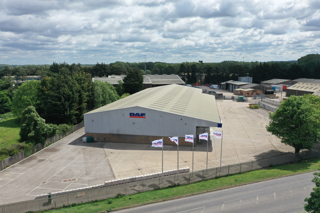Andrew Overton, chief executive at Connexas Group
A fresh wave of technologies for the transport sector will continue to disrupt fleet management in 2020, improving operational efficiency and raising safety standards for the benefit of drivers and other road users.
With the UK’s changing safety standards and the growing pressure to reduce environmental impact early adopters are expecting significant rewards.
If reports from this year’s Consumer Electronics Show (CES) are anything to go by, artificial intelligence (AI) is leading the field as a tech trend to watch for transport operators in the year ahead.
Enhancing the capabilities of connected vehicle technologies, AI is accelerating the way to autonomy and AI-enabled telematics platforms are already demonstrating their value-driving benefits.
Here are the top five tech trends that fleet operators should keep under review in 2020:
1. Predictive telematics and dynamic routing
Using AI and machine learning to extract value from big data is enhancing the functionality of telematics platforms.
By overlaying this value-added functionality with real-time geographic and traffic information, transport operators can perform a risk assessment of each journey they are about to make – even allowing them to predict the likelihood of a road traffic accident in the next 48 hours.
This information allows them to make changes in order to avoid congestion or high-risk routes and in so doing, optimise efficiency reduce fuel consumption and minimise the risk of collisions.
2. Wearable tech for drivers
Sensor technology is already widely used by vehicles to monitor everything from object proximity to tyre pressures.
To improve driver safety, wearable devices can now be used to monitor and analyse key biometric data.
Using an app developed by Fuell, drivers can monitor the duration and quality of their sleep in the last 24 hours, find out more about their stress levels before, during and after each shift, and identify potential risks and patterns.
As well as improving overall safety, these devices make the most of gamification, creating company incentives and active driver buy-in to lower health risks.
3. Biomethane for HGV fleets
With grants and subsidies for greener vehicles removed, technology companies have been focused on creating a renewable fuel solution that is accessible for the transport sector.
One key area of development has been biomethane-powered HGVs, which could be about to accelerate the switch away from diesel.
Many fleet operators have been waiting until the technological dust has settled before investing in upgrading their HGV fleets, and biomethane could provide the solution of choice.
4. Driver face recognition and onboard camera systems
Last year the transport industry was introduced to basic ADAS technology through onboard forward/driver-facing camera systems.
However, 2020 will focus on the integration of these systems through a single telematics platform, which can be remotely accessed in real-time by the operator for total visibility of fleet operations.
Recent feedback from current trials have shown how ADAS technology can help exonerate drivers with reliable evidence, which could help to determine the cause of an accident, for example.
When linked with proactive driver training programmes, onboard ADAS camera systems can also provide a useful tool to help educate drivers about how to improve their driving behaviour and optimise fuel efficiency.
5. Bluetooth tagging for temperature-controlled distribution
Bluetooth technology is increasingly being utilised in the logistics and distribution sector for monitoring and controlling operations, particularly in the area of temperature control.
The latest technology involves the use of a Bluetooth tag, placed securely in the vehicle’s hold, which is linked to a web-based telematics portal to monitor the air temperature in real-time, every second.
This solution, which is compliant with EM-1213, avoids lengthy and costly installation processes whilst providing accurate and reliable confirmation of the temperature at which the goods have been stored throughout their journey, from the point of pick up, through to delivery.



















Login to comment
Comments
No comments have been made yet.